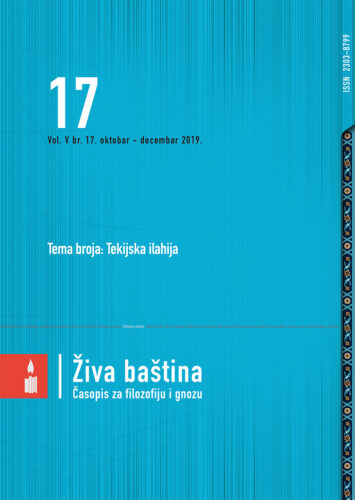UDK 28-42
U kontekstu sve češćih međusobnih odricanja vjerodostojnosti među različitim muslimanskim grupacijama, glavna Alāvijska tekija iz Mustegānema, Alžir, oglasila se je, 17.01.2016. godine, saopćenjem u kojem podsjeća na razumijevanje tesavvufa u izvorima islama i vjerodostojne uleme. Neposredan povod tome bio je napad pripadnika neoharidžijskog pokreta na jednu njihovu tekiju u Gazzi, Palestina.
‘Alāvijske tekije vežu se za istoimeni sufijski red čiji je utemeljitelj šejh Ahmed ibn Mustafa el‑‘Alāvi (1869.-1934.). Red je najrasprostranjeniji u zemljama islamskog Magreba, a njegovo središte je u Mustegānemu (Alžir). UNESKO je u novembru 2013. godine, odao priznanje ovom redu ističući: “Ovaj red pokazuje kako se može najbolje služiti čovječnosti i kako se može svijet učiniti usklađenijim i ljepšim mjestom. On prihvaća i priznaje sve što čovjeku može donijeti materijalnu udobnost, ali uvijek u bliskoj vezi sa unutrašnjom dimenzijom, u stalnoj ravnoteži između profanog i svetog.”
Abstract
Tasawuf in Islamic Sources and Opinions of Scholars Shaikh Halid ibn Tunis In the context of more and more frequent mutual negations of accuracy amongst different Muslim groups, the main Alawy tekke from Mostaganem (Algeria) has issued a statement in January 17th 2016 in which they remind on understanding of tasawuf in the Islamic sources and among credible scholars. The immediate motive for this was attack by members of Neo-Khawarij Movement on one of their tekke in Gaza (Palestine).
‘Alawy tekkes are related to the Sufi order of the same name that was founded by Sheikh Ahmed ibn Mustafa el‘Alāvi (1869–1934).45 The order is the most spreaded in the Islamic countries of Maghreb, and its centre is in Mostaganem (Algeria). UNESCO paid tribute to this order in November 2013 by stating: “This order shows how to serve to humankind in the best possible manner as well as how to make the world more harmonized and better place. It recognises and acknowledges all that can bring a material comfort to a man, but always in close connection with internal dimension, in the constant harmony between worldly and sacred.”
[tags]

